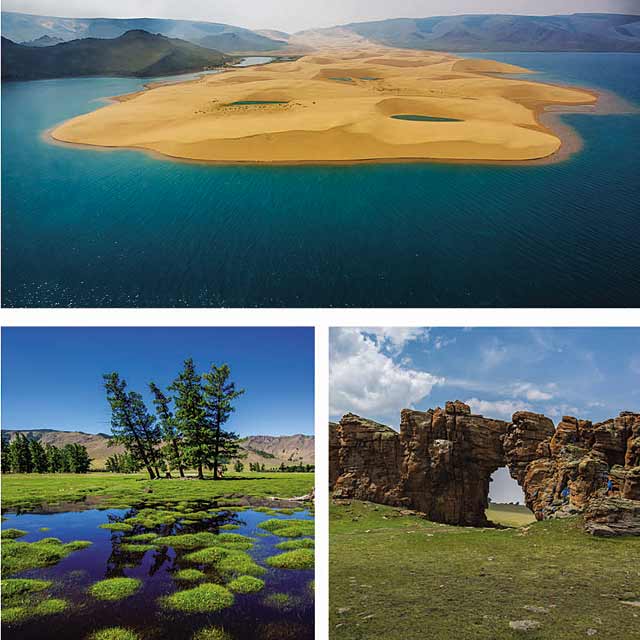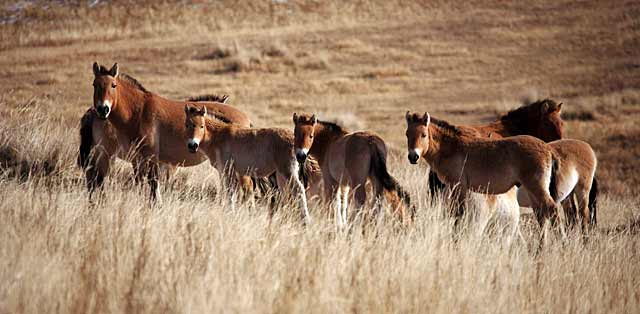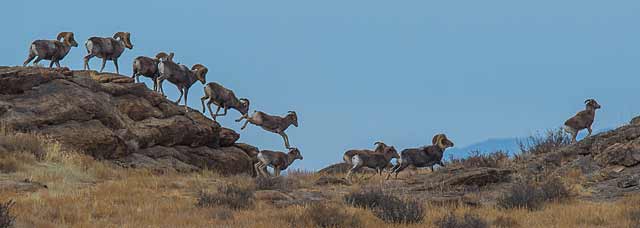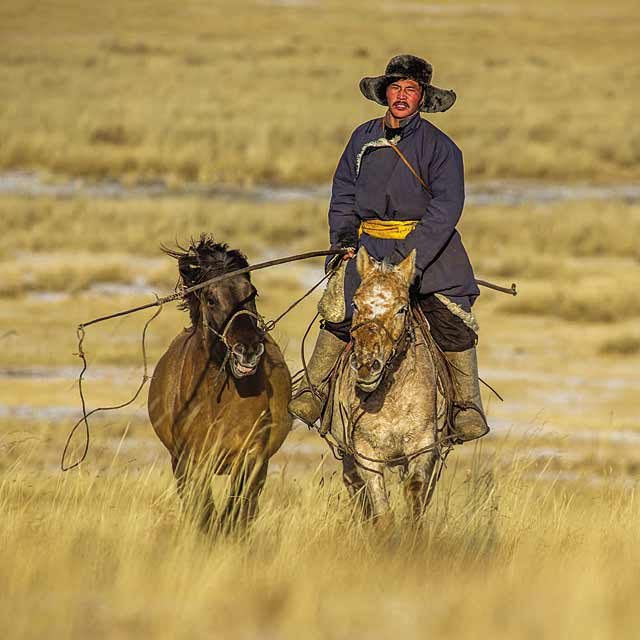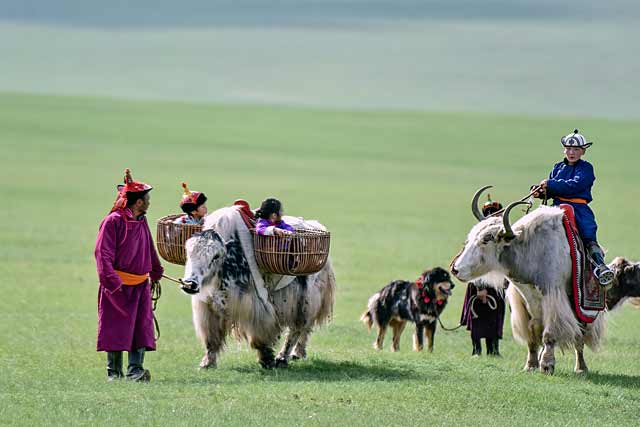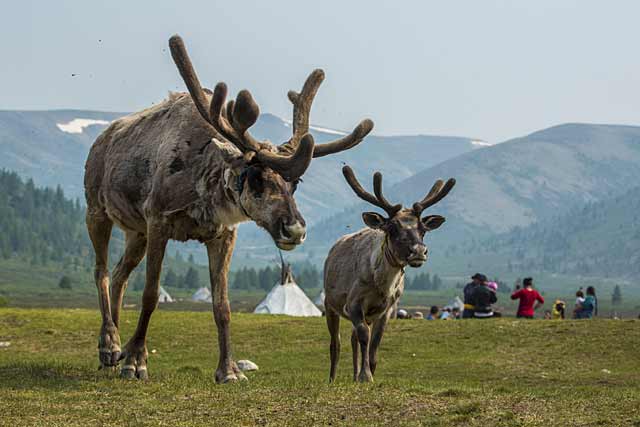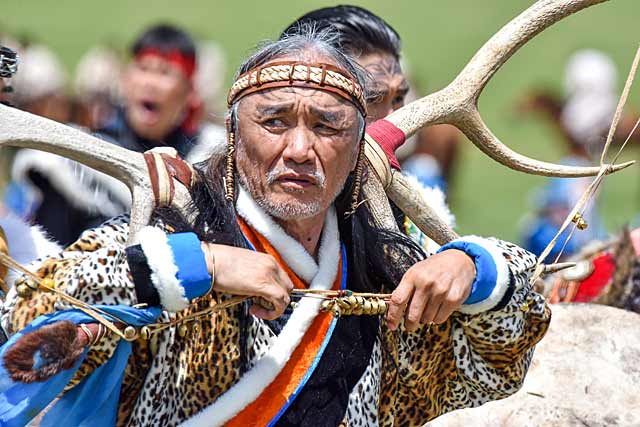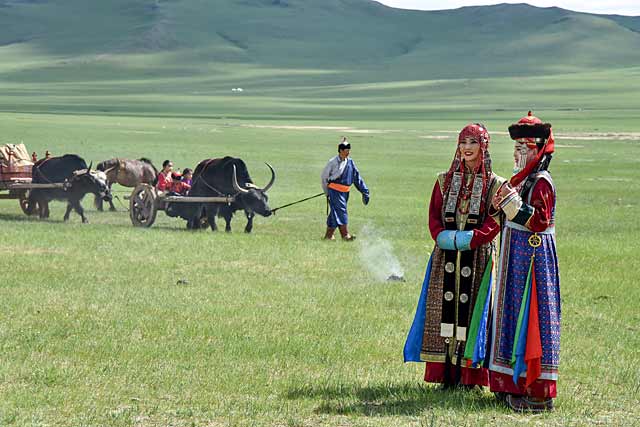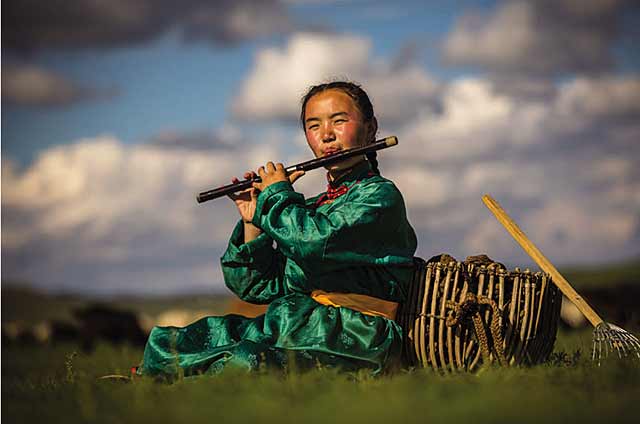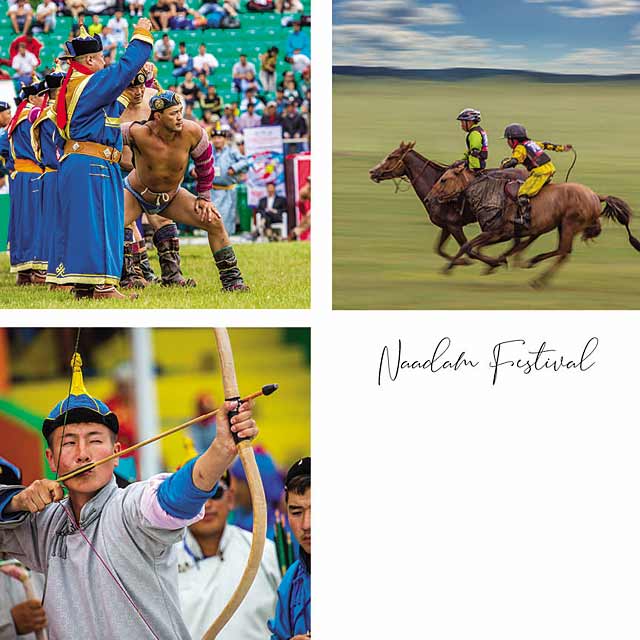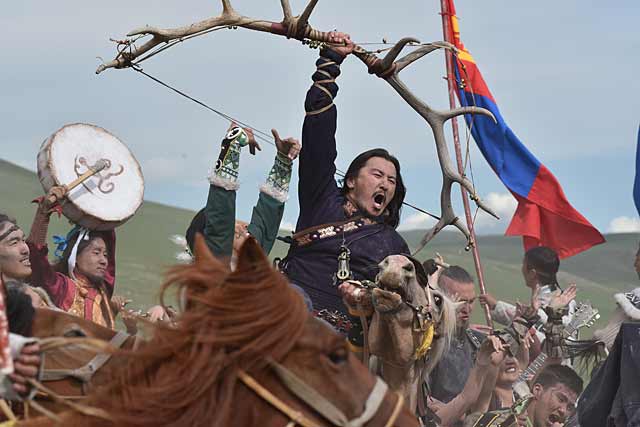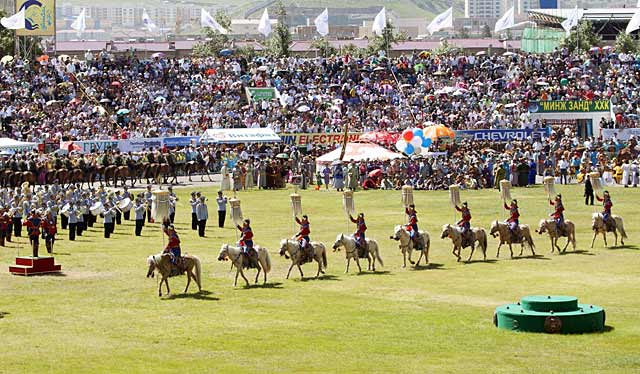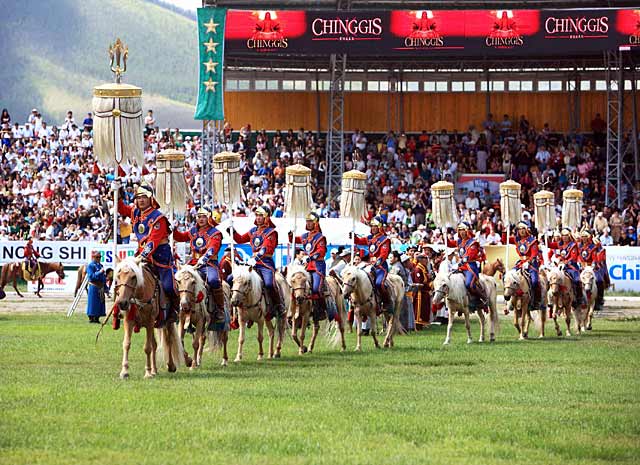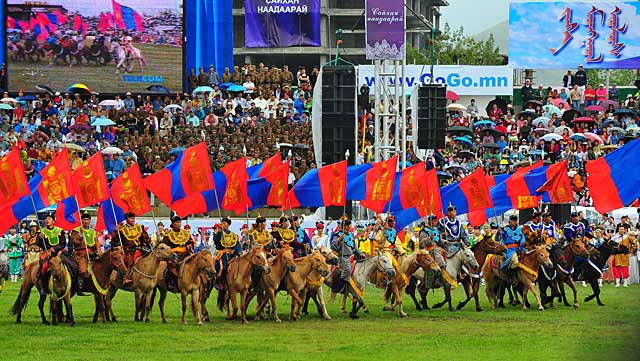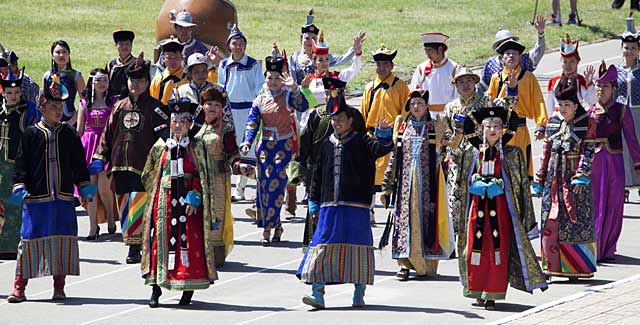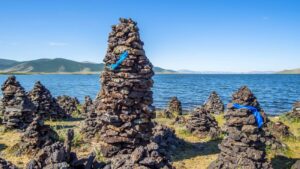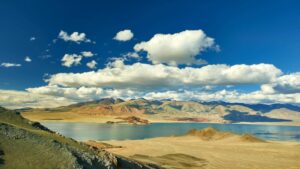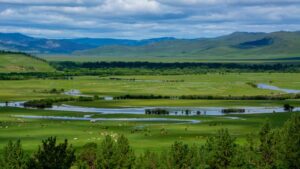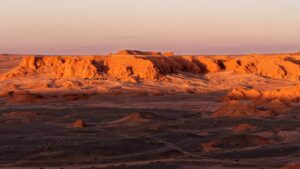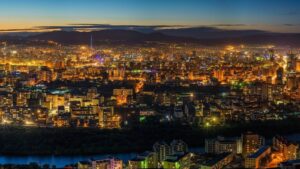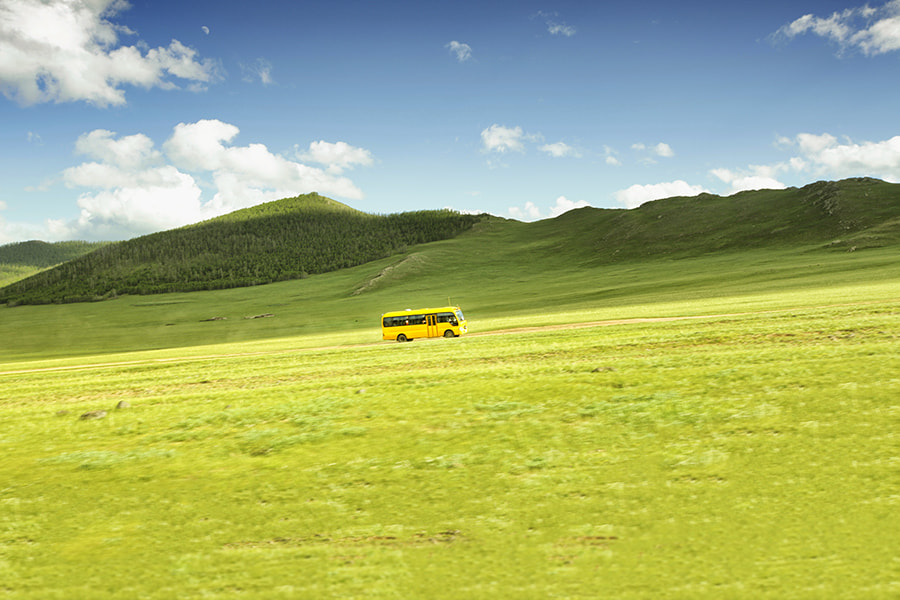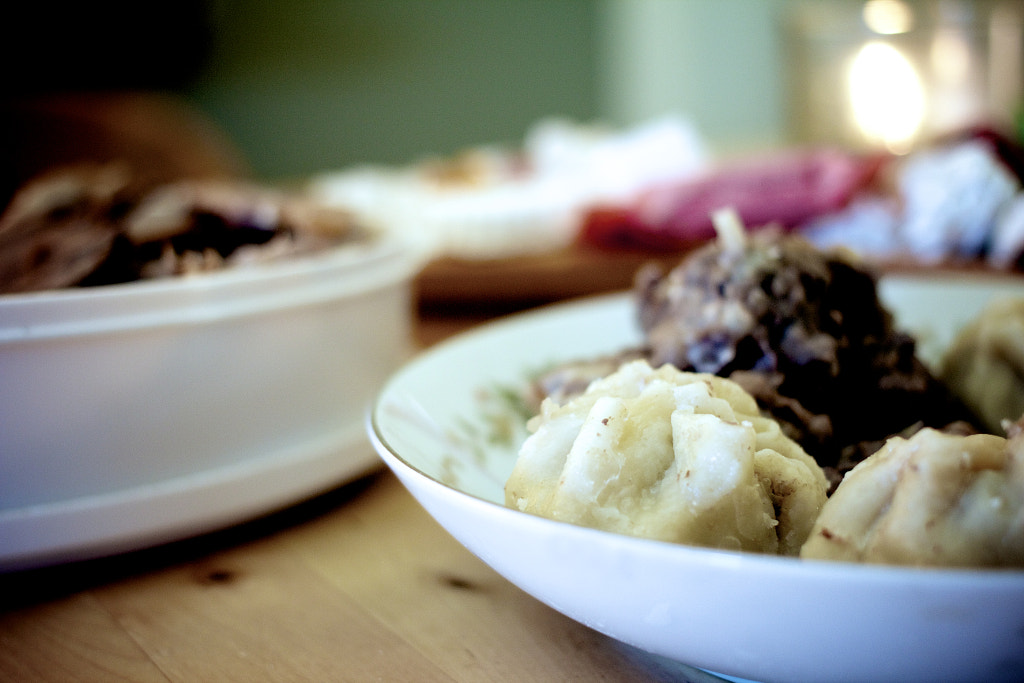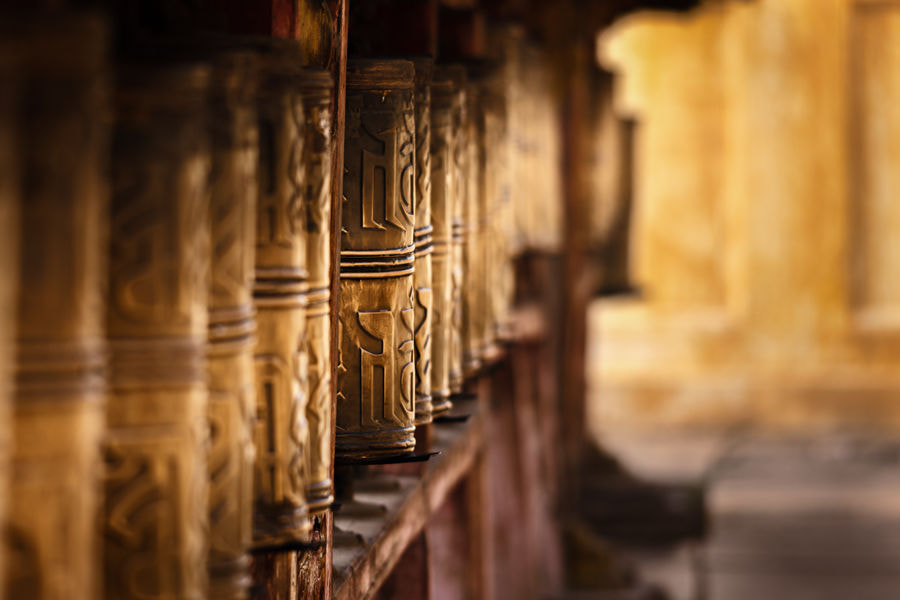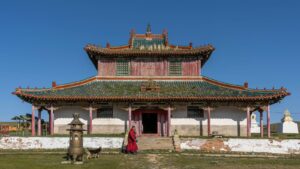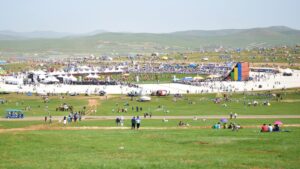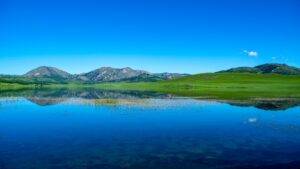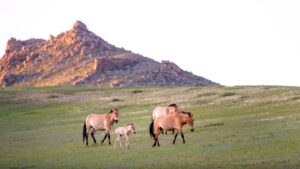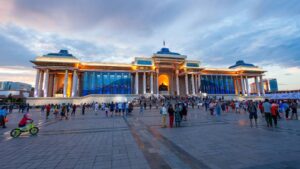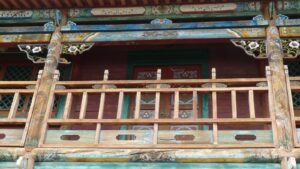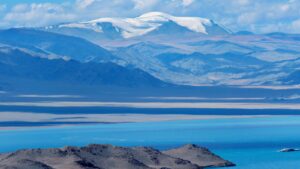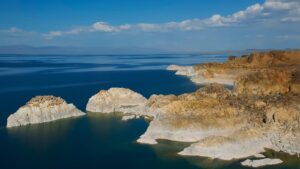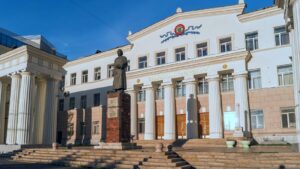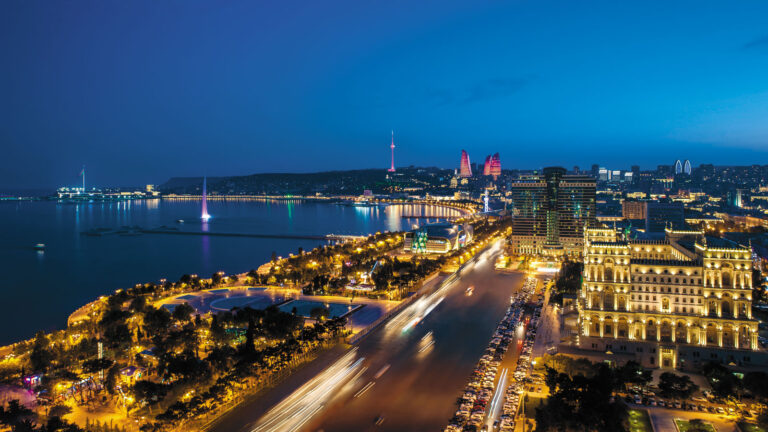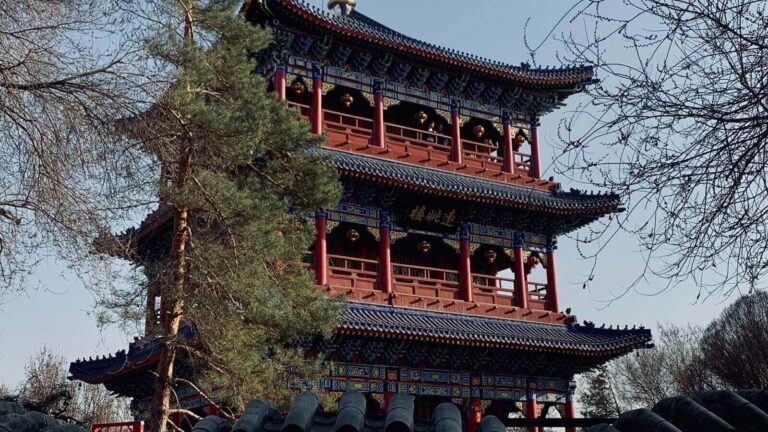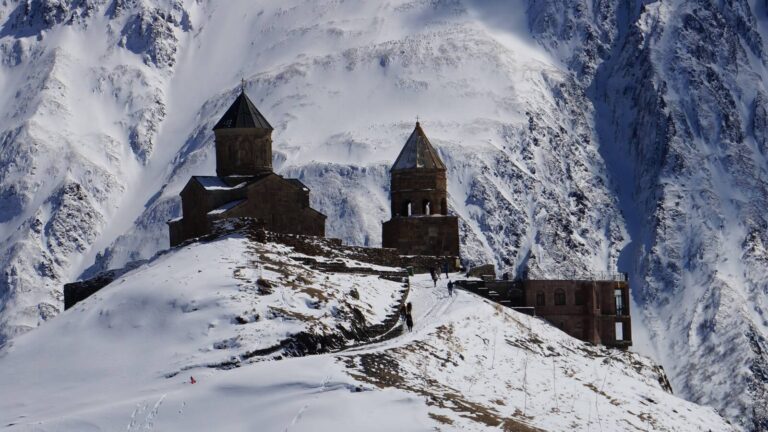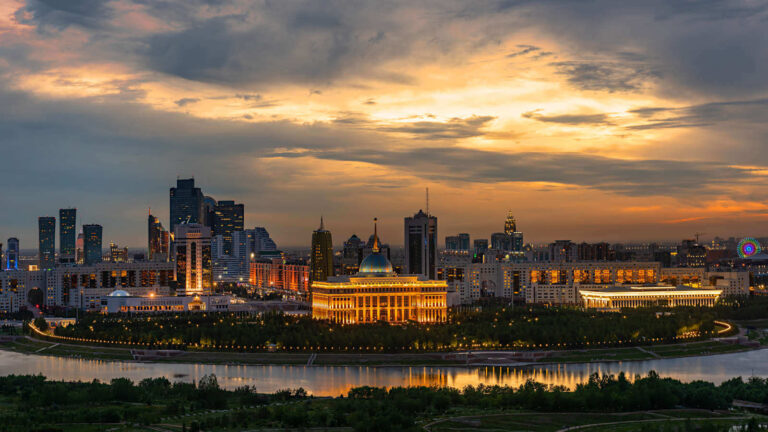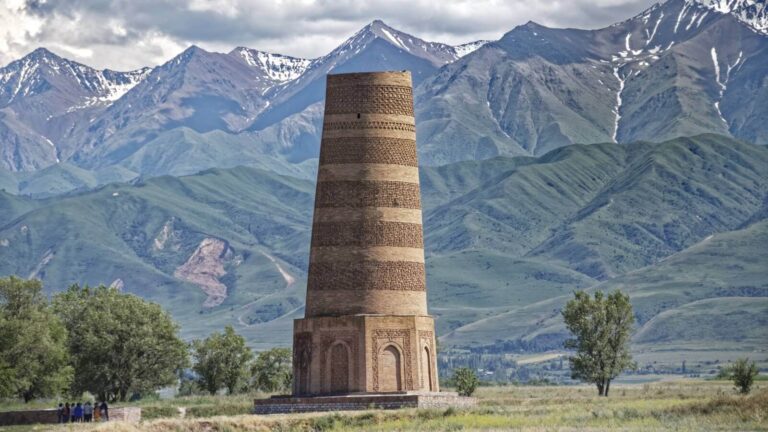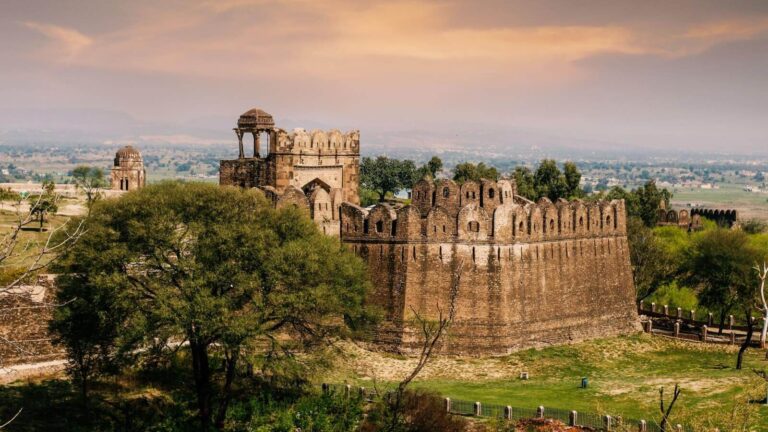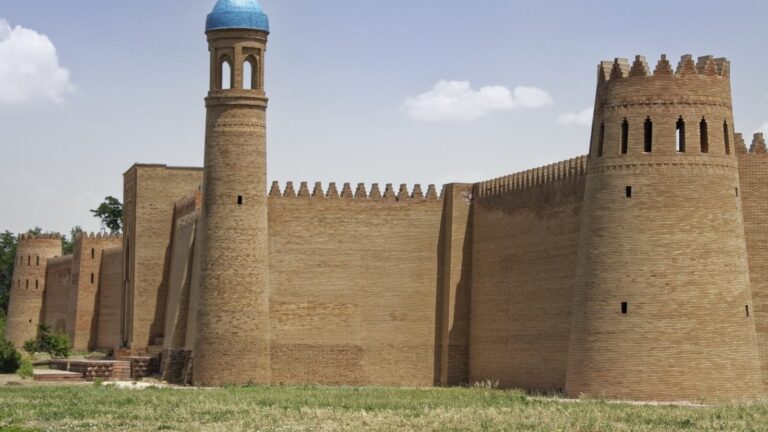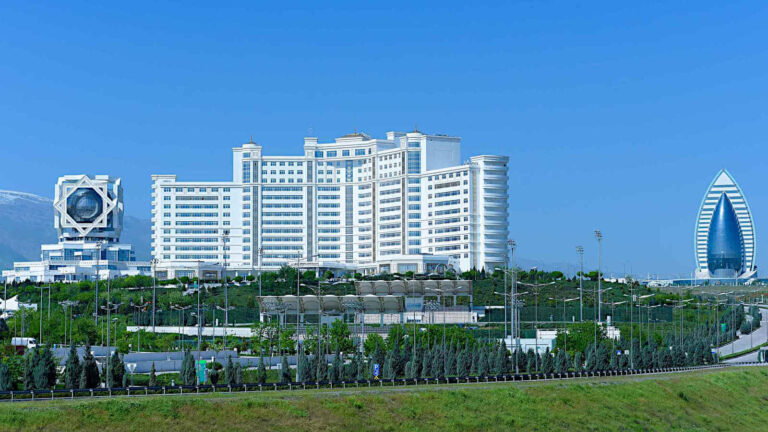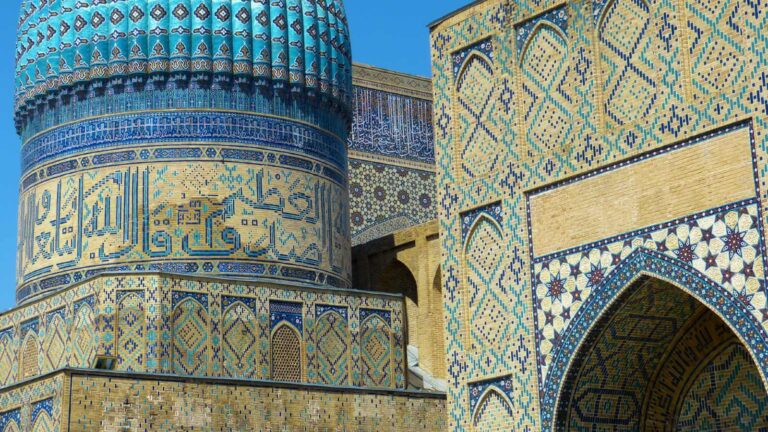A land of vast and untamed wilderness, Mongolia Is a unique destination filled with outdoor adventure and fascinating traditional culture. Journey through its endless open spaces as you follow the footsteps of Chinggis Khan through stunning, varied pristine landscapes, all while experiencing its intriguing blend of nomadic culture that endures among 21st-century modern living.
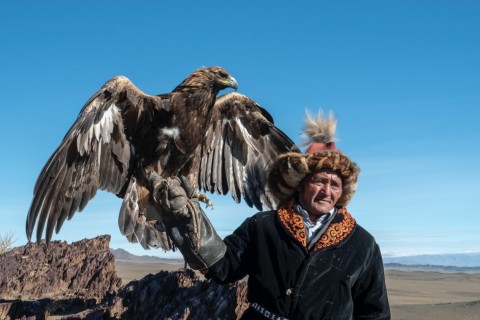
Language: Mongolian
Currency: Tögrög
Capital City: Ulaanbaatar
Population: 3.3 million
History
Mongolia boasts a remarkable history that stretches back a staggering 750,000 years. In more ‘recent times’ of 209 BC, the Hunnu (Huns) established a powerful empire in northeastern Asia before various states (Xianbei, Rouran, Turkic, Uigar etc) and tribes resided over vast areas of land.
The most pivotal time in the nation’s history came about 1206 with the emergence of Chinggis Khaan, founder of the expansive Mongolian Empire, the largest contiguous empire in history. Centuries of conflicts and expansions eventually led to Mongolia falling under the rule of the Manchu Qing Dynasty in the 17th century.
In 1921, Mongolia declared independence with the aid of the Russian Red Army, becoming the world’s second socialist country. The Mongolian People’s Republic was established in 1924, and Mongolia gained full membership in the United Nations in 1961.
With the dissolution of the Soviet Union, Mongolia transitioned into a vibrant multi-party democracy, experiencing rapid economic growth in the past three decades.
Geography and Nature
When it comes to the ‘great outdoors’, few countries in the world can stake such a literal claim to the term than Mongolia.
As the world’s second largest landlocked country (behind Kazakhstan), Mongolia has a total land area of 1,566,500 square kilometres and comprises varied landscapes of grassy plains, rugged snow-capped mountains, taiga forest, pristine remote lakes and the famed Gobi desert. And though Mongolia finds itself wedged in between heavyweights of Russia and China – both culturally and geographically – it sits a world away from either.
Among this geographical diversity, the country has rich offering of flora and fauna with some 139 mammal species and 400-plus different types of birds.
Economy
Economic activity in Mongolia has been traditionally based on herding, agriculture, trade, and services. Today mining, agriculture, and service industries make up the bulk of GDP. The labor force is about 1.200 million with over 52% engaged in the service industry, over 25% in agriculture, and 23% in industry.
The main export commodities are coking coal, copper concentrate, gold, iron ore, crude oil, zinc concentrate, fluorspar, cashmere goods, washed and combed cashmere, livestock and animal products, meat, wool, and hides. As of 2022, the People’s Republic of China (PRC), Switzerland, Singapore, and Republic of Korea are the biggest export partners, whereas the PRC, Russian Federation, Japan, and Republic of Korea are the biggest import partners that consist about 78% of merchandise imports.
Mongolia joined the World Trade Organization in 1997 and since expanded its participation and integration into Asian regional economic and trade regimes.
People and Culture
The values and traditions of Monglians are deeply intertwined to its unique way of living and is enriched with practical and symbolical meanings.
The rich cultural and social fabric of Mongolia is made up of 20 different Mongol and non-Mongol ethnic groups, each with their unique traditions, religion, clothes and history.
Some 40% of Mongolia’s population still practice a nomadic lifestyle. However herders face challenges through uncertainties brought about by climate change, which has seen a dramatic increase in recent years number of herders move to the city in search of work.
Important Dates
Mongolia has various holidays and celebrations. The most important holidays include:
- Tsagaan sar (Lunar new Year) – according to the lunar calendar late January/early February
- Naadam (Age old celebration of the test of courage, strength, dexterity and marksmanship)- 11.July -13.July
- Independence day – 26.Nov
The principal ways to get to Mongolia are by train and by air. Flights are run all year round by national carrier MIAT Mongolian Airlines and other foreign airlines.
By Plane
New Ulanbaatar International Airport (capital) started operation from July 2021 and is the main port of entry for those arriving by air.
By Train
The Trans-Mongolian Railway is one of the world’s most iconic train journeys. Following the route of ancient tea caravans, it makes its way from Moscow in Russia to Beijing in China via the Mongolian capital Ulaanbaatar.
Mongolia has two main border train stations:
- Mongolia-Russia border: Ereentsav, Sukhbaatar
- Mongolia-China border: Zamyn- Uud
Ticket reservation options:
- Online: https://eticket.ubtz.mn/
- In person at the station.
By Car
Russia and China are the two main border points for foreign travellers arriving by car.
Mongolia-Russia border: There are two road crossings: Tsagaannuur–Tashanta in Bayan-Ulgii aimag and Altanbulag–Kyakhta (near Sükhbaatar) in Selenge.
Mongolia-China border: The two border points open to foreigners, Zamyn-Üüd–Èrlián and Tǎkèshénkěn between Zamyn-Üüd and Èrlián.
By Bus
As well as bus travel between border points in Russia and China there’s also a bus between Bayan-Ulgii and Astana in Kazakhstan.
Hot summers and cold winters. Average summer temperature is +20C, average winter temperature is -23C, average rainfall 200-220 mm per annum (dry climate), the sun shines for over 200 days a year. Timezone is +7 hours GMT.
MONGOLIA WEATHERDiscover Mongolia’s best Destinations on each Season
As of 2023 Mongolia has a 90-day visa-free policy for citizens of the following countries: Argentina, Belarus, Brazil, Chile, United States, Kazakhstan, Kyrgyzstan, Macao, Serbia and Ukraine. For 30 days: Germany, Canada, Cuba, Israel, Japan, Laos, Malaysia, Russia, Singapore, Turkey, Thailand and Uruguay. For 21 days : Philippines; 14 days : Hong Kong
Till the end of 2025, citizens of the following countries are exempt for visas for 30 days: Australia, Austria, Belgium, Bulgaria, Cyprus, Croatia, Denmark, Spain, Estonia, Finland, France, Greece, Hungary, Ireland, Iceland, Italy, Latvia, Liechtenstein, Lithuania, Luxembourg, Malta, Monaco , Norway, New Zealand, Netherlands, Poland, Portugal, Czech Republic, Romania, United Kingdom, Slovakia, Slovenia, Sweden and Switzerland
For other nationalities: Please contact a Mongolian Embassy or consul.
As of June 2023, no vaccinations are required for entry.
It is permitted for a foreign citizen, who holds a valid international driving permit accompanied by a driving license issued by a country that is a party of the Vienna Convention on Road Traffic, to drive in Mongolia for duration of one year. For further information please visit http://eng.police.gov.mn/news/content/type/124
Main Regions of Mongolia
From bus and train to horseback and 4WD adventure, there’s plenty of ways to get around this vast open land. Bus is the most common form of public transport in Mongolia, and Ulaanbaatar is connected to all other regional cities through both private and government bus companies.
Most cities have daily runs with large buses, however smaller towns have less frequent minivan service. Regular buses and vans depart punctually and provide uninterrupted travel, while private vans operate on a flexible schedule, waiting to gather enough passengers and making stops along the way.
There’s no ride share service available in Mongolia, however UBCab and ABA taxi Mongolia both have apps used in Mongolia.
Information regarding train, bus and inter-city transit schedule please visit: https://www.u-money.mn/
All urban areas and settlements have electricity, mobile services and wi-fi access. There are several major mobile operators including Mobicom, Unitel, Gmobile, and Skytel, each with their own unique package for different kinds of consumers. Each mobile operators have different branches throughout the city, making purchases easily available.
Mongolia’s country code is +976.
Most restaurants, shopping centres, cafes, have free wi-fi.
Hotels, backpackers, short-term rental, guest houses and camping are all options available to tourists. From simple and atmosphere ger camps to hostels and luxury hotels, Mongolia offers the full range of accommodation optons. Due to its vast landscape, camping in the countryside is accessible and is not illegal.
Booking sites include:
For centuries, Mongolians have sustained themselves with their herds, relying on meat and milk as their staple foods. Traditionally, vegetables were considered animal feed. Stir-frying and boiling are the primary cooking methods using a wok, with steaming for dumplings. In Ulaanbaatar and other major cities you’ll find a diverse and cosmopolitan restaurant scene.
Mongolia does not have a widely accepted tipping system. Foods from different regions are available. From small, family-owned dining places to fine-dining restaurants, barbeque to vegetarian restaurants,
Mongolians are known for their hospitality, therefore, it is common for families to offer various foods and beverages to their guests. When eating with a family, guests are expected to follow traditional customs, such as not declining food and beverages, accepting food even when not hungry, not receiving food with the left hand, etc.
Currency and Exchange Rates
Mongolia’s national currency is the Togrog (MNT). Though tourists can exchange most currencies to MNT inside Mongolia, ATMs are widely available in the towns and credit cards are becoming more widely accepted. However make sure to stock up on sufficient togrogs before leaving the capital as you are very unlikely to find an ATM out on the steppe.
Credit Cards
In most cities around Mongolia and particularly in the capital Ulaanbaatar, ATM’s and credit cards are becoming more widely accepted. However make sure to stock up on sufficient togrogs before leaving the capital as you are very unlikely to find an ATM out on the Steppe.
Business hours
Business hours in Mongolia are 9am-6pm. Restaurants and shopping malls open until 10pm. Unlike other Asian countries, bargaining for a price is generally not a prominent part of life in Mongolia. However, there is no harm in doing some fair haggling while shopping at a local market.
Unique products in Mongolia
Unique products tourists and travelers may purchase in Mongolia include, but not restricted to: Cashmere products, Seabucktorn products, traditional clothing piece, “aman khuur” (small instrument), and other various souvenirs.
Mongolian’s possess a profound spiritual essence that goes beyond the realm of organised religion. While Buddhism religion is a part of their spiritual landscape, it represents only a fraction of their rich tapestry. Much of Mongolia’s spirituality is woven into the day-to-day rituals influenced by their shamanic past. The ancient animist beliefs of Siberian and steppe tribes, venerating the sun, earth, and sky, continue to thrive and hold a deep connection in contemporary Mongolia.
Alcohol consumption is illegal for people under the age of 21, and the first day of every month is no-alcohol day, meaning selling or buying alcoholic beverages is prohibited.
Smoking indoors is prohibited.
It’s always polite to ask someone if they mind being photographed and some temples and government buildings may not permit photography.
Mongolia is a relatively safe country for foreigners. However, street crime like pickpocketing is on the rise, especially in the larger towns. Most crime occurs late at night, often outside bars and nightclubs, so take care of your phone and belongings.
Mongolia’s extreme weather increases the dangers for any potential emergency situations, so it is important to have emergency contact information and address of the insurance companies, travel companies and the embassies.
The phone number to report crimes to the local police in Mongolia is 102. The number to call an ambulance or fire truck in an emergency is 103. Please note that local authorities, including the operators responding to these emergency numbers, may not commonly speak English. It is better to have travel and health insurance when you are planning to go to Mongolia.
In case of Emergency
Fire department: 101
Police department: 102
Medical department: 103



